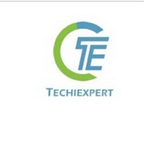Experts specializing in IoT and Big Data Science say the internet of things (IoT) is gaining strength in the post-Covid era. IoT is now widely embedded in all sectors of the economy, including manufacturing, utilities, transportation, consumer electronics and health care. As a result, enterprises can develop highly efficient and reliable IoT products. Various development firms can provide IoT services, but you should ensure they have all the qualifications necessary to deliver high-quality products. When it comes to choosing the right IoT hardware development company, the search can be very tedious.
It is undeniable that poor requirement gathering results in low-quality products. For a field such as the Internet of Things (IoT), where multiple disciplines are involved, this results even for simple software projects. A request for proposals (RFP) articulates the business requirement clearly, and it is our first point of contact until a blueprint or scoping document is mutual during sales. A low level of information is a part of the statement. It’s crucial to find, filter and reach out to highly specialized vendors within record timeframes. Approximately over a year will pass from the issue of the RFP until the product launch is complete.
This guide will help you write your RFP for an IoT product if you’re having trouble with it.
PESTEL analysis breakdown
Every IoT product addresses a business or individual issue. A PESTEL (Political, Economic, Social, Technology, Environmental & Legal) analysis is necessary to describe the project’s goals because most of the first adopters are sectors essential to the functioning of society (healthcare, insurance, defence etc.).
You can express your vision best with the PESTEL analysis. Their impact on various areas gives a clear picture. Consequently, it is an excellent opportunity for the vendor to take in your ideas and present suitable proposals. Performing a comprehensive PESTEL analysis at the beginning cuts down on iterative pre-sale questions.
How to secure IoT devices from cyber security
How to slow down climate change with IoT
How Smart clothing technology is going to stay
How Industrial IoT helps manufacturing industries
So PESTEL isn’t intended for a simplified product? Not certainly. Analysis volumes can also vary depending on the type of product. PESTEL belongs in the goals section of the RFP. It is advisable to set quantitative goals when either expressing the desired direction or finalizing company goals.
Utilize automated tools
Despite IoT being a relatively new field, few tools may help you write an RFP more quickly. Platforms provide templates of IoT projects from the past, for instance. Many of the services offer customized resources on-demand as a way to do the work for you. You can also generate RFP documents with tools based on the questionnaire you completed.
All of them, however, are limited to basic projects. The lengthier the project, the more domain expertise is required. In response to your project-related questions, the RFP tool searches its vendor database for those who match your requirements and recognizes those that do. With this tool, you can quickly generate a Request For Proposals (RFP) and send them to the vendors you want.
Through the years, enterprise customers and top-tier vendors have signed up. It is a pretty simple process. Following a few top-level questions via the business’s RFP tool, the business receives a notification from product development companies and consultants. An estimation request (RFQ) is made available to all applicants and concludes the best partner. There is a possibility that the entire process can take as little as one week, which is the beauty of the platform since it allows businesses to save both time and money.
Make MVP your focus
During the RFP process, the Minimum-Viable Product (MVP) has to be detailed. While creating a solution, the MVP can serve as a starting point in the electronic, mechanical, software, and middleware cores. Also, it helps for scoping solutions and enabling/disabling functionality. IoT solutions can transmit and analyze big data, along with their physical design. Therefore, the MVP should evaluate the elements by the degree of criticality.
RFPs for prototypes are a good idea!
In the IoT product ecosystem, prototyping plays a key role. A production prototype just before mass production is hence the most accurate mock-up of the final configuration after the initial prototypes are validated. Prototyping expertise is a critical factor in choosing a technology partner. So, if RFPs could request a prototype approach, nothing like it. A separate RFP draft for building the initial prototypes can help, or this could be part of the overall RFP. Consider an RFP here if you have a complex product in mind.
You can establish a connection with the deserving vendor through an effective RFP for IoT. There is a lot involved with the internet of things, and it is the right time to adopt contemporary practices before moving ahead. It is no less important to establish a quality product idea and work with quality partners than to create a qualitative requirement.
